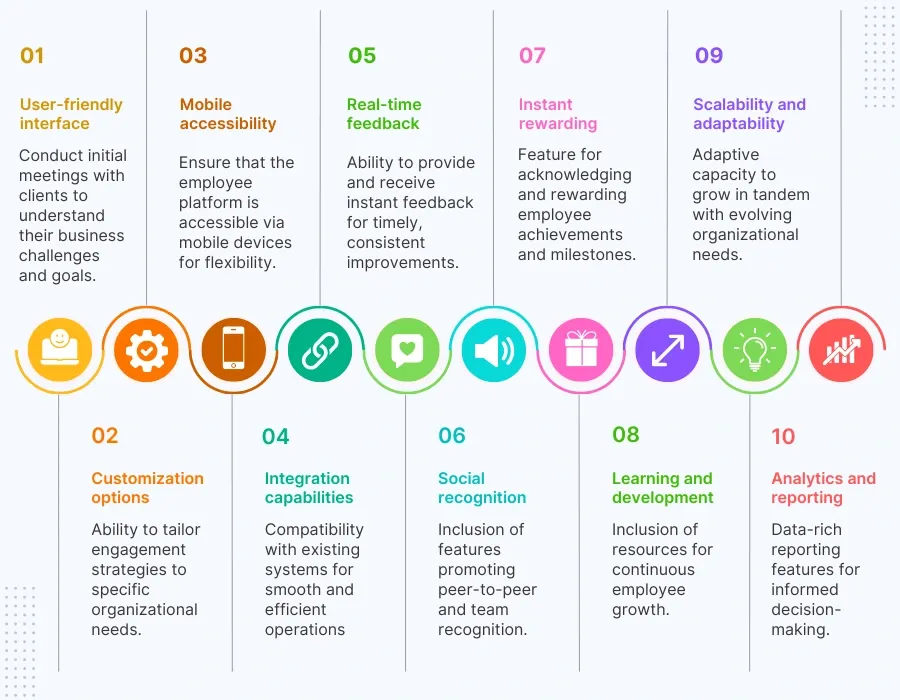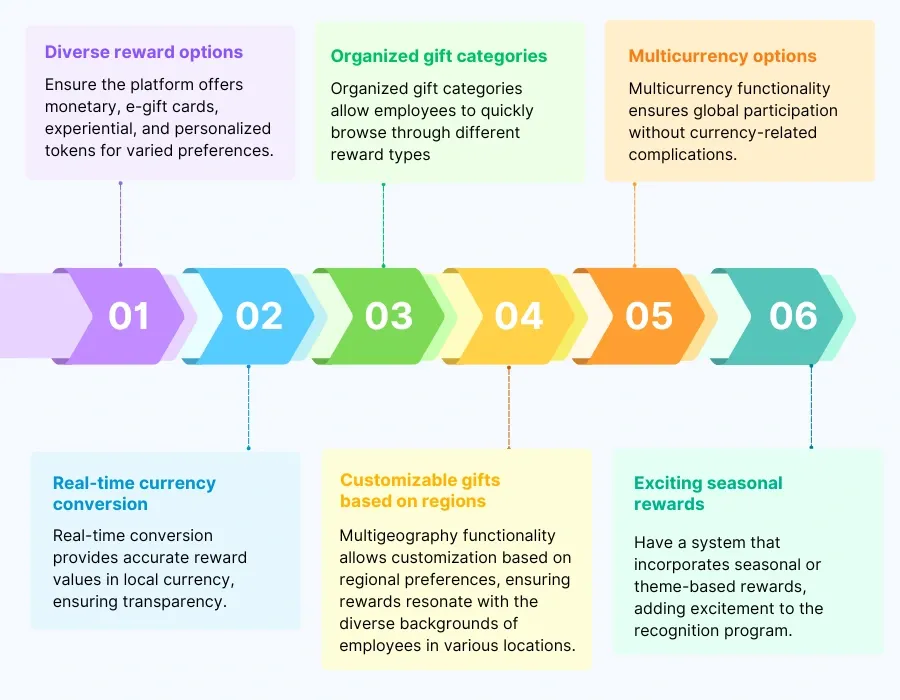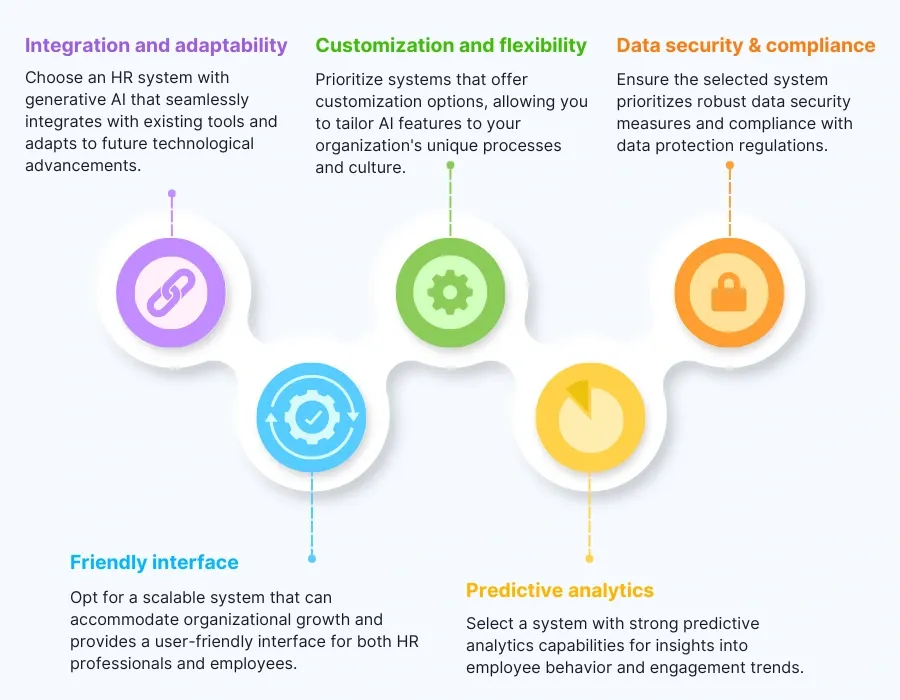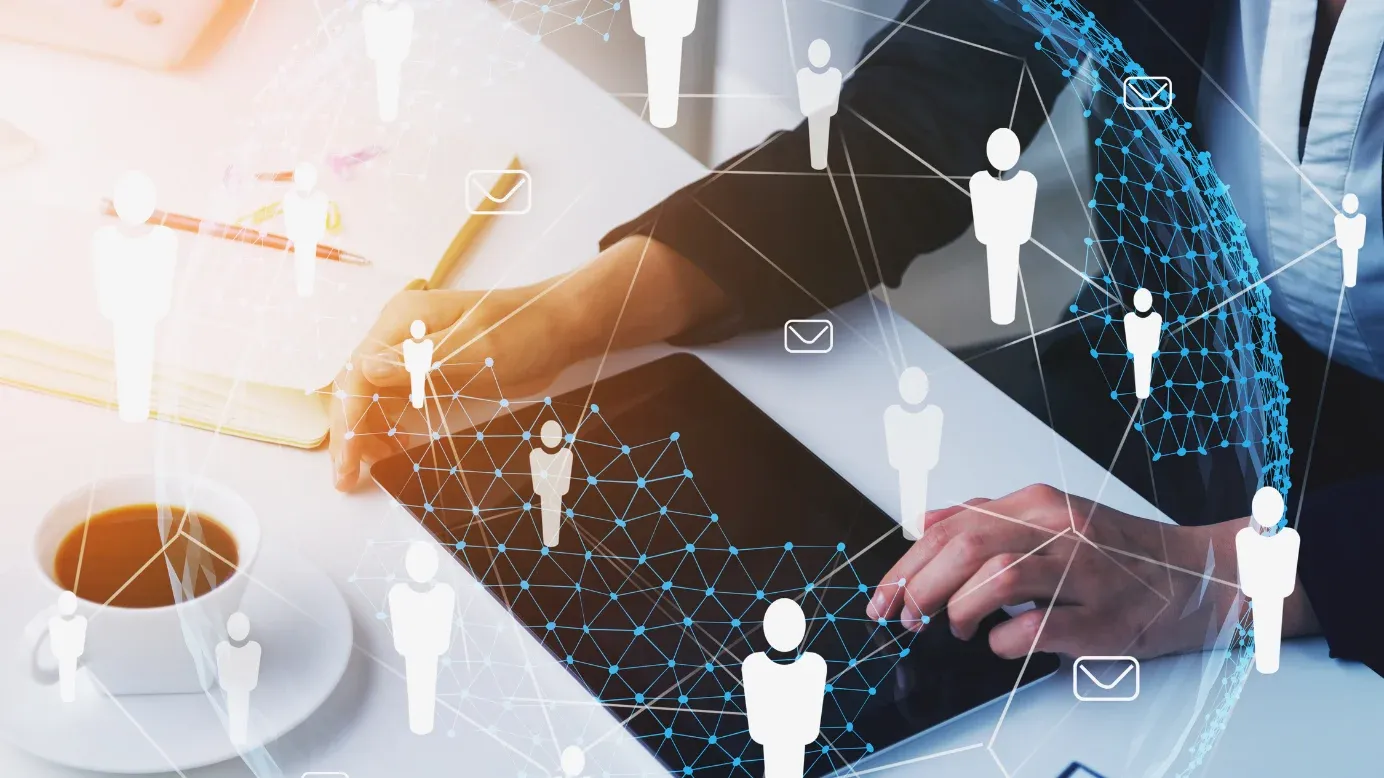HR-Trends im Jahr 2024: Navigieren durch die Zukunft der Arbeit
Entdecken Sie die neuesten HR-Trends, die die Arbeitswelt im Jahr 2024 prägen werden, und erfahren Sie, wie Sie sich mit innovativen Strategien in der sich wandelnden Landschaft der Zukunft der Arbeit zurechtfinden.
"Das Einzige, was schlimmer ist, als blind zu sein, ist zu sehen, aber keine Vision zu haben." - Helen Keller
Zu Beginn des neuen Jahres hat dieses Zitat einen starken Bezug zu den HR-Praktiken, die an jedem Arbeitsplatz eingesetzt werden. Heutzutage sind Personalverantwortliche eher wie ein technikaffiner Trendsetter, immer bereit für das nächste große Ding. Sie müssen sich weiterhin an den technologischen Fortschritt, den gesellschaftlichen Wandel und die sich ändernden Erwartungen der Mitarbeiter anpassen.
Der Grund liegt auf der Hand: Der Wandel ist groß. Es geht nicht mehr nur um die Verwaltung von Menschen, sondern darum, wie wir alle arbeiten.
An der Spitze dieses Wandels stehen einige wichtige HR-Trends, die die Art und Weise, wie Unternehmen das Personalmanagement angehen, neu definieren werden.
Wir wollen verstehen, wie.
3 HR-Trends, die die Arbeitswelt neu definieren werden
Diese HR-Trends verdeutlichen einen deutlichen Wandel hin zu einem ganzheitlichen, mitarbeiterorientierten Ansatz. Damit können Unternehmen nicht nur die Produktivität und das Wohlbefinden ihrer Mitarbeiter steigern, sondern auch einen nachhaltigen Geschäftserfolg sicherstellen.
1. Ganzheitliche Plattformen zur Mitarbeiterbindung werden in den Mittelpunkt rücken
Dies beweist, dass es nicht mehr nur um das gelegentliche Team-Lunch oder die jährliche Leistungsbeurteilung geht. Die Unternehmen erkennen die Notwendigkeit eines umfassenderen Ansatzes, um ihre Mitarbeiter motiviert, produktiv und vor allem zufrieden zu halten. Mitarbeiterengagement ist nicht nur ein Schlagwort, sondern ein wichtiger Faktor für den Unternehmenserfolg.
Warum es eine Verlagerung hin zu ganzheitlichen Plattformen für das Mitarbeiterengagement gibt:
- Vielfältige Bedürfnisse der Arbeitskräfte: Der traditionelle Top-Down-Ansatz im Management weicht einer integrativen und kooperativen Arbeitskultur. Ganzheitliche Plattformen unterstützen diesen Wandel, indem sie eine offene Kommunikation und die Beteiligung der Mitarbeiter an der Entscheidungsfindung ermöglichen.
- Technologischer Fortschritt: Das Aufkommen digitaler Tools und Plattformen ermöglicht innovativere und effektivere Wege zur Einbindung der Mitarbeiter, von virtuellen Teambuilding-Aktivitäten bis hin zu KI-gesteuerten personalisierten Feedback-Systemen. Mit dem Aufkommen digitaler Tools ist der Einsatz eines cloudbasierten HR-Systems ein kluger Schachzug, da das System es allen Beteiligten erleichtert, in Verbindung zu bleiben und Ideen auszutauschen. Es hilft bei der Organisation von Teamaktivitäten und bei der Erteilung von Feedback, das auf jede Person zugeschnitten ist. Außerdem bieten cloudbasierte HR-Systeme eine Skalierbarkeit und Flexibilität, die herkömmliche Systeme nicht bieten können. Wenn Unternehmen wachsen, ändern sich ihre Anforderungen, und ein cloudbasiertes System kann sich schnell an diese Veränderungen anpassen, ohne dass erhebliche Investitionen in die Infrastruktur erforderlich sind. Diese Anpassungsfähigkeit ist besonders in sich schnell entwickelnden Branchen oder in Zeiten organisatorischer Veränderungen wie Fusionen oder Erweiterungen von Vorteil.
- Zunehmende Bedeutung des Wohlbefindens: Die psychische Gesundheit und das allgemeine Wohlbefinden am Arbeitsplatz rücken immer mehr in den Mittelpunkt und werden von ganzheitlichen Plattformen effektiv angesprochen.
- Die Erwartungen der Mitarbeiter ändern sich: Die Mitarbeiter von heute suchen eine sinnvolle Arbeit und persönliche Entwicklungsmöglichkeiten, die über eine finanzielle Vergütung hinausgehen.
- Verbindung zur Unternehmensleistung: Die direkte Auswirkung des Mitarbeiterengagements auf die Unternehmensleistung, einschließlich Produktivität, Innovation und Kundenzufriedenheit, wird immer deutlicher.
Faktoren, die bei der Auswahl einer ganzheitlichen Plattform für Mitarbeiterengagement zu beachten sind

Salesforce, ein weltweit führender Anbieter von CRM-Lösungen, legt großen Wert auf die Förderung einer gesunden Belegschaft. Das Unternehmen hat eine einzigartige Initiative zur Erstattung von Wellnesskosten eingeführt, bei der die Mitarbeiter einen monatlichen Zuschuss von $100.
Dieser Zuschuss kann für verschiedene Aktivitäten wie den Besuch von Konzerten, die Teilnahme an Fitnesskursen oder die Inanspruchnahme von Ernährungstherapien verwendet werden.
Die positiven Auswirkungen dieser Wellness-Programme auf das allgemeine Wohlbefinden der Mitarbeiter sind beträchtlich und zeigen das Engagement von Salesforce bei der Förderung eines gedeihlichen und unterstützenden Arbeitsumfelds.
Die Auswirkungen der Einführung ganzheitlicher Plattformen für das Mitarbeiterengagement
2. Digitale Belohnungen und Anerkennungsfunktionen werden sehr gefragt sein
In dem Maße, in dem sich die Form der Arbeit weiterentwickelt, ändert sich auch der Ansatz für die Belohnung der Mitarbeiter. Digitale Abzeichen und Belohnungen sind in den Mittelpunkt gerückt und bieten eine bequeme und dennoch wirkungsvolle Möglichkeit, Leistungen anzuerkennen.
Warum digitale Belohnungen und Anerkennung im Trend liegen
- Sofortige Belohnung: Digitale Belohnungen können sofort verteilt werden und bieten unmittelbare Anerkennung und Befriedigung, was die Moral und Motivation steigern kann.
- Bequemlichkeit und Zugänglichkeit: Digitale Belohnungen sind für eine vielfältige und oft geografisch verstreute Belegschaft leicht zugänglich. Egal, ob ein Mitarbeiter im Büro oder an einem anderen Ort arbeitet, die digitale Anerkennung stellt sicher, dass jeder ohne logistische Herausforderungen gewürdigt werden kann.
- Gamification-Elemente: Die Einbindung von Gamification-Elementen in digitale Belohnungen sorgt für Spaß und Engagement. Indem die Anerkennung in ein Spiel verwandelt wird, werden die Mitarbeiter motiviert, mehr zu leisten und einen positiven Beitrag zum Arbeitsumfeld zu leisten.
- Globale Konnektivität: In derglobalisierten Arbeitswelt von heute überwinden digitale Belohnungen Grenzen. Sie ermöglichen es Unternehmen, Erfolge auf globaler Ebene zu feiern und fördern ein Gefühl der Zusammengehörigkeit und des gemeinsamen Erfolgs unter Mitarbeitern in verschiedenen Regionen.
- Umweltbelange: Digitale Belohnungen sind im Vergleich zu physischen Belohnungen umweltfreundlicher, was mit der zunehmenden Betonung der Nachhaltigkeit in den Geschäftspraktiken übereinstimmt.
Faktoren, die bei Plattformen zur Einbindung von Mitarbeitern mit digitalen Belohnungen und Anerkennungsfunktionen zu beachten sind:

Rakuten ist fest davon überzeugt, dass alle Mitarbeiter einbezogen werden müssen. Das Unternehmen fördert das Gefühl der Verbundenheit innerhalb der Unternehmenskultur durch das Angebot von Mitgliedschaften in Sportvereinen und Zugang zum Fitnessstudio.
Außerdem gibt es finanzielle Vergünstigungen, z. B. Unterstützung bei einem Umzug. Das ist ihre Art, die Arbeit zu einem Ort zu machen, an dem sich alle wohlfühlen und verbunden sind.
Die Auswirkungen der Einführung digitaler Belohnungen und Anerkennung
3. Die generative KI-Erfahrung wird die Mitarbeitererfahrung verändern
Entgegen dystopischer Befürchtungen hat die generative KI die HR-Tech-Plattformen revolutioniert. Es geht nicht darum, den Menschen zu ersetzen, sondern die Erfahrung der Mitarbeiter zu verbessern. KI hilft bei der Personalisierung der Mitarbeiterreise, vom Onboarding bis zur Schulung und sogar beim Leistungsmanagement.
Warum KI im HR-Bereich im Trend liegt
- Vorausschauende Erkenntnisse: Generative KI analysiert Muster, um künftige Bedürfnisse vorherzusagen und proaktiv auf die Anforderungen der Mitarbeiter zu reagieren.
- Maßgeschneiderte Lernpfade: Verabschieden Sie sich von einer Einheitsschulung, die für alle passt. KI sorgt für personalisierte Lernerfahrungen, die individuelle Kompetenzlücken schließen und kontinuierliches Wachstum fördern.
- Effiziente Aufgabenautomatisierung: Kein Ertrinken mehr in sich wiederholenden Aufgaben. KI kümmert sich um das Alltägliche und gibt den Mitarbeitern die Freiheit, sich auf die wirklich wichtigen Aufgaben zu konzentrieren.
- Bessere Entscheidungsfindung: Die datengesteuerten Erkenntnisse der KI ermöglichen es HR-Experten, fundierte Entscheidungen zu treffen und eine Kultur der kontinuierlichen Verbesserung zu fördern.
- Steigert die Mitarbeiterzufriedenheit: Wenn sich die Arbeit maßgeschneidert anfühlt, wenn Aufgaben gestrafft werden und wenn das Wachstum personalisiert ist, steigt die Zufriedenheit der Mitarbeiter in die Höhe.
Faktoren, die bei der Auswahl einer Plattform mit generativer KI zu beachten sind

IBM hat KI in seine HR-Systeme implementiert
Ein leuchtendes Beispiel für ein Unternehmen, das an vorderster Front bei der Implementierung von KI in ihren HR-Systemen ist IBM. IBM hat KI nahtlos in verschiedene Aspekte seiner HR-Prozesse integriert, von der Rekrutierung bis zur Mitarbeiterbindung.
Mit seinen KI-gestützten Tools hat IBM die Effizienz seiner Einstellungsprozesse verbessert und eine präzisere Abstimmung zwischen Bewerbern und Stellenangeboten sichergestellt. Darüber hinaus bieten die KI-gesteuerten HR-Systeme personalisierte Lernerfahrungen für die Mitarbeiter und tragen so zu einer kontinuierlichen Kompetenzentwicklung und Karriereentwicklung bei.
Der Einsatz von KI in der Personalabteilung von IBM ist ein Beispiel dafür, wie Technologie genutzt werden kann, um ein optimiertes, personalisiertes und zukunftsorientiertes Arbeitsplatzerlebnis zu schaffen.
Die Auswirkungen der Implementierung generativer KI in HR-Systemen
Schlussfolgerung
Wenn wir in die Kristallkugel der Zukunft des Personalwesens blicken, ist eines klar: Die einzige Konstante ist der Wandel. Die Zukunft des Personalwesens ist keine ferne Realität, sondern eine sich entfaltende Erzählung, in der Innovation auf Mitgefühl trifft und in der das menschliche Element nicht nur bewahrt, sondern aufgewertet wird.
Die HR-Trends dieses Jahres zeigen eine deutliche Verschiebung hin zu einem ganzheitlichen, mitarbeiterzentrierten Ansatz. Wenn Sie sich diese Trends zu eigen machen, können Sie die Produktivität und das Wohlbefinden Ihrer Mitarbeiter verbessern und gleichzeitig einen nachhaltigen Unternehmenserfolg in einer sich schnell verändernden Welt sicherstellen.












